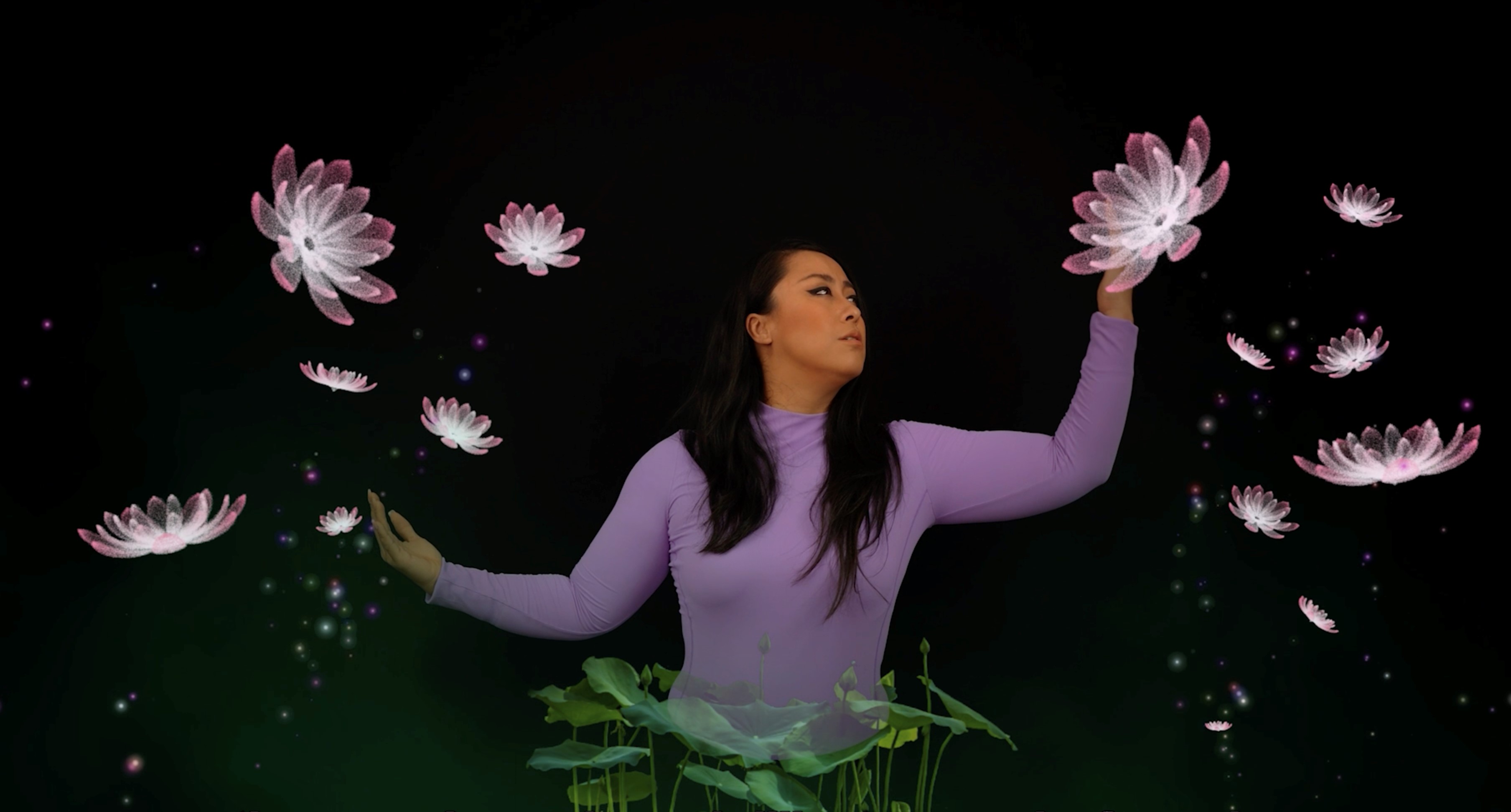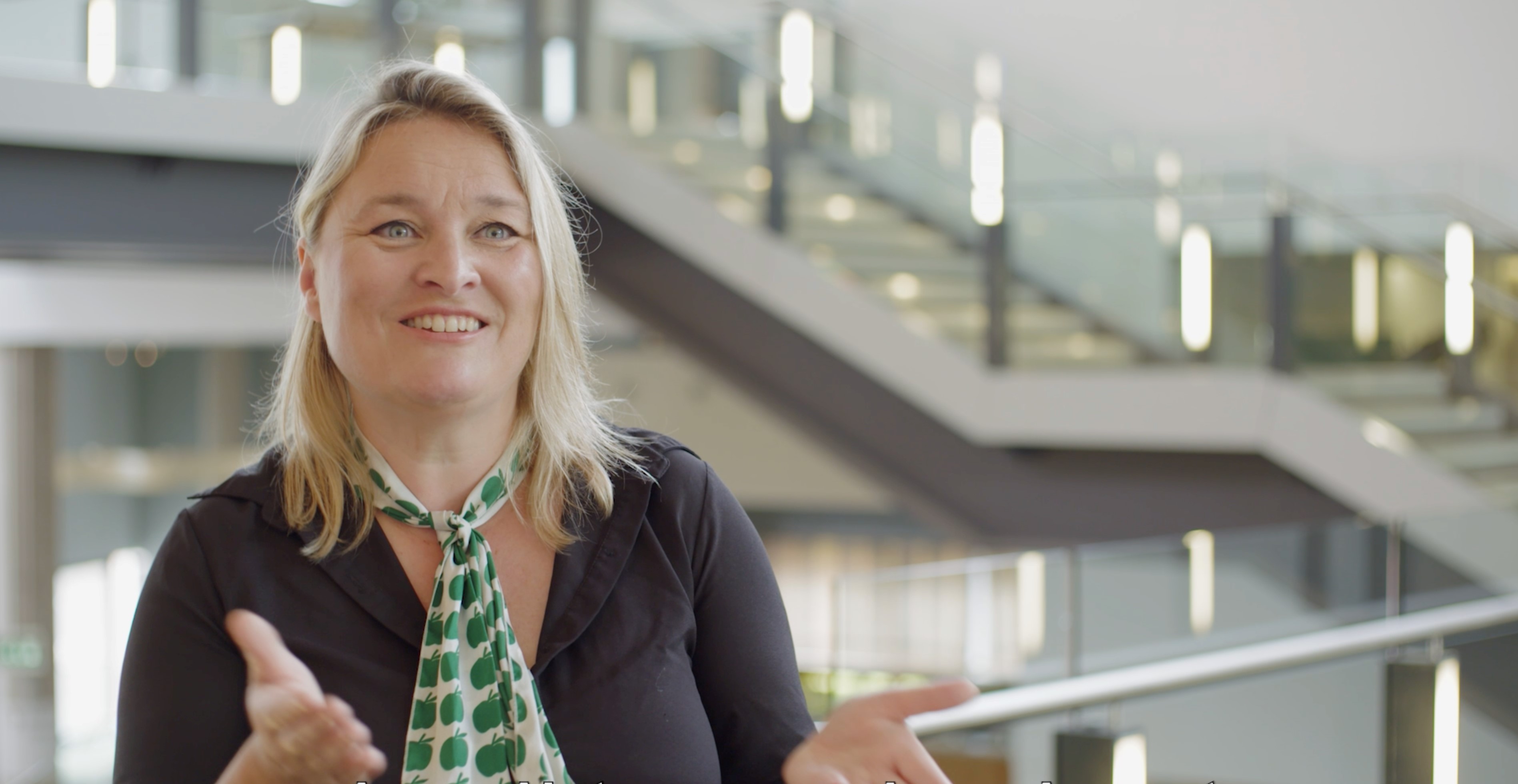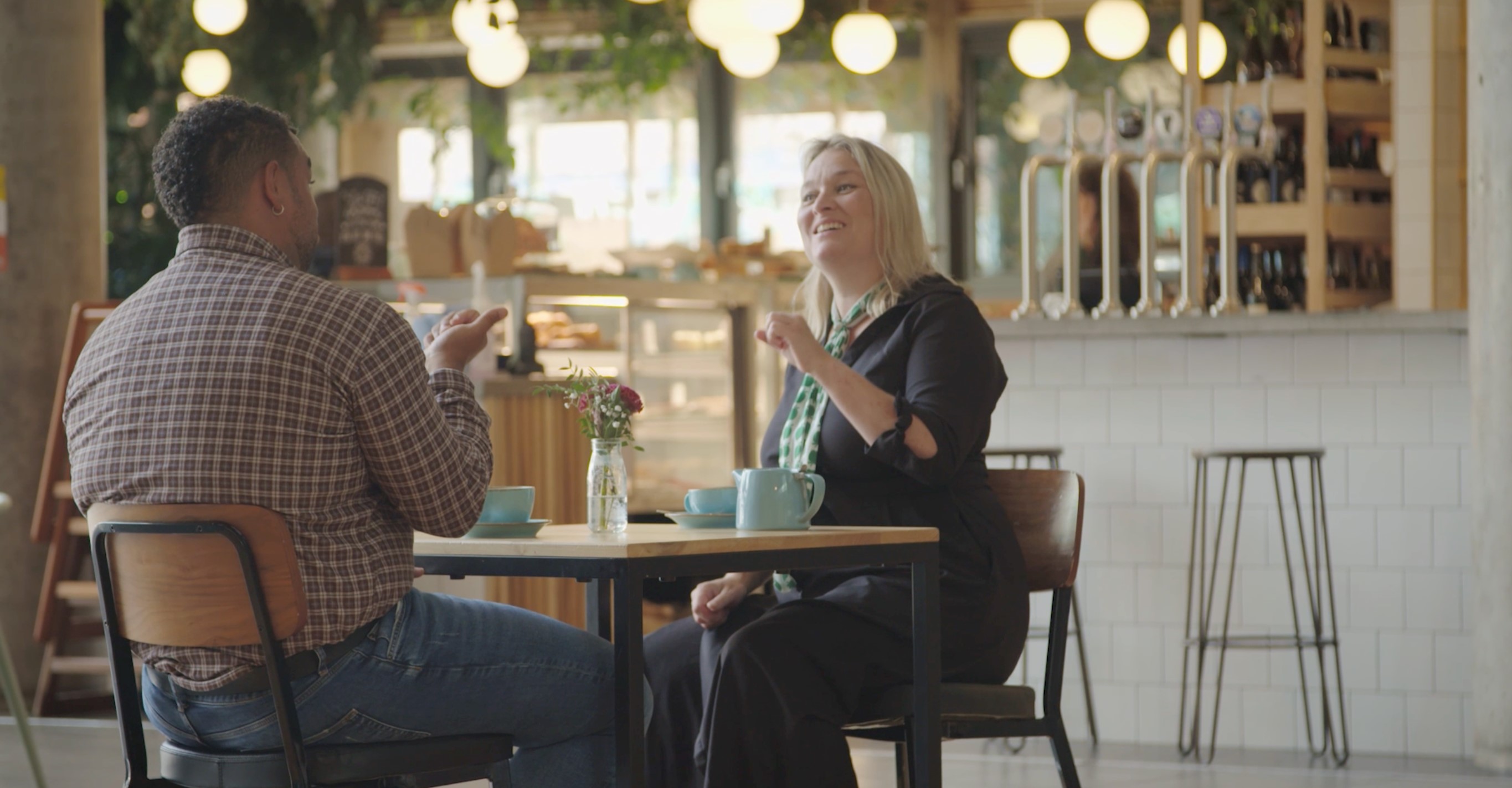Cathy Mager: Speaking for deaf people through sign language performance
Through her artistic endeavors, she skillfully creates a bridge that connects the worlds of those who can and cannot hear. Her artworks, which explore various themes including equality, climate change and cultural heritage, bring light to the deaf community.
Upon first meeting Cathy Mager, the remarkable creative director and artist, her radiating smile leaves an enduring impression. Assisted by a British Sign Language translator, People’s Daily Online engaged in a meaningful conversation with Mager at the Bristol Beacon, one of the cultural landmarks in the city. For Mager, art offers the deaf community an open and inclusive space, and is central to advocating for equal rights of deaf people all around the world. Through her creative powers, she strives to be an active voice in the deaf community, empowering deaf people to embrace a strong and unique sense of self-identity, while inspiring more of them through her life story.
Sign Night connects Sino-UK deaf artists

'Unfurl' for Sign Night Shanghai
People's Daily Online: Last year, you collaborated remotely with Chinese sign language artist, Alice Hu, to bring the performance of 'Unfurl' for Sign Night Shanghai. This sign language projection film was inspiring and full of surprises. How did this Sino-UK collaboration come about?
Cathy Mager: When the Sign Night Film, directed by me, came out in 2020, I was invited to share it with Chinese artists in Beijing remotely and I met Alice at this event. From this came our collaboration of ‘Unfurl’. This projection film was showcased at Shanghai Duolun Museum of Modern Art. I wrote the poem in English and Alice performed it using Chinese Sign Language, I was so impressed by the details, depth, and intelligence, which Alice and her collaborators added to my original script. Because of Covid, the audience was limited to 50, which was actually nice because it created an intimate and in-depth experience. We also broadcasted the performance online so more deaf people will have access to this performance. I was able to have a really fantastic conversation with the audiences after the performance. Everyone was really enthusiastic and intrigued by it. I think the audiences would like to see us develop the performance further and cannot wait to see what Alice and I were going to do next.
People's Daily Online: What are the underlying themes and messages behind 'Unfurl'?
Cathy Mager: This performance has many layers of meaning. Firstly, it seeks to delve into deaf cultural identity. In my poem, I wrote, "as my hands unfurl, my heart opens to the sky", which points to liberation through sign language and deaf culture. Through the metaphor of a lotus flower's growth, the performance portrays a deaf person going through life and facing many challenges and obstacles, having to navigate them and figure out who they are and who will they become. The lotus flower also symbolizes admirable qualities of perseverance and resilience, which are key traits of the deaf community.
Alice and I were also keen to explore global biodiversity emergencies and climate change through this performance. Sign language has the ability to express complex multi-layered scientific visual representations of nature, portraying the mysterious natural world with depth and details, which in some cases are much harder to achieve in written form. It is important to recognize that deaf people have a role to play and a need to be part of the relevant discussions of biodiversity emergencies and climate change.
People's Daily Online: What are some of the memorable exchanges you had with the deaf community in China?
Cathy Mager: Last year, I was invited by the British Council to take part in the UK-China Creative Connections event. During the online live broadcast, which involved about 200,000 people, I shared my film, Sign Night, and my artistic career. There was a lovely moment when a deaf person in the audience asked me if I could teach them British Sign Language alphabet and everyone began using British Sign Language. It was so magical that I did not expect have an engagement like this with people who are so far away. I will always remember how warm and interested everyone was.
People's Daily Online: What collaborations do you hope to form with Chinese artists and organizations going forward?
Cathy Mager: Everyone who worked on Sign Night Shanghai have been amazing, Alice and I will work in collaboration with them going forward. This year and next year, we are planning to expand our team, hoping to collaborate with two deaf dancers. We will be workshopping, experimenting, and improvising a collaboration between dance, sign language projection and biodiversity in China together. I look forward to collaborating with more Chinese artists and fostering greater recognition of deaf talent and deaf skills globally.
Empowering the deaf community through art

Cathy Mager (Photo/Patrick Shead-Simmonds)
People's Daily Online: There are currently more than 300 forms of sign language in our world. Could you tell us something about the uniqueness of sign language?
Cathy Mager: Sign language is not just unique to the deaf community; there are people who use sign language within their native culture. As a way of human communication, sign language has been around for thousands of years. All sign languages around the world are unique to each other and there are different regional variations of sign language. Interestingly, British Sign Language is completely different to American Sign Language, even though the languages match in terms of vocabulary. There are some similarities within Chinese and British Sign Languages, possibly because of trade or collaboration in the past. For example, the signs for 'positive' and 'negative', 'good', and 'bad' are similar. Sign language needs to be recognized as a language in its own right. It is not something to be afraid of; it is a language worthy of respect and admiration. It is crucial that countries recognize sign language as an official language, so that deaf people can be more assertive and access services easily.
We are still in the process of coming to understand the evolution and development of different sign languages and dialects around the world. The rise of technologies like AI will have positive and negative impacts on the evolution of sign language. On one hand, AI as a language tool can help deaf people from all over the world to communicate and collaborate with each other, as well as allowing better exchange between deaf and hearing people. On the other hand, AI will affect the natural evolution of sign language; the evolution of sign language should be led by deaf people instead of machines. Therefore, it is important to find a balance between the two going forward.
People's Daily Online: How did your upbringing lead you to pursue a career in art and make you actively involved in supporting the deaf community?
Cathy Mager: The history of deafness in my family goes back to the 1700s. I am the seventh generation deaf person; my son is the eighth generation deaf person. In the 1970s, my mother was actively in campaigning for disability rights. My house was often full of disabled people from different backgrounds, which gave me an access to some brilliant role models. Many of them were artists and they have influenced by work strongly.
While the world is slowly becoming more inclusive and diverse, some fundamental barriers for the deaf community are still there. One of the main barriers is the perception of deaf people are less intelligent. I believe creative arts can play a key role in changing this negative perception. I always try to include deaf people and their stories in my work, whenever I can. I want to show that deaf people are actively participating in many different things and can pursue various ways of life.
People's Daily Online: Your wide-ranging artistic work is loved and appreciated widely. For you, what role does art play in empowering deaf people and the disabled community?
Cathy Mager: Art allows flexibility, it offers innovation, and it is open to creativity. For deaf people, visual media is key to how they interact, experience, and communicate in everyday life. Therefore, art is an ideal space for deaf people to enter and share stories and lived experiences to the wider world. Museum and art galleries are used to embrace things that are new and different, being central to empower deaf people. I am currently leading a heritage program at Bristol Beacon, which has commissioned disabled artists. I will also be collaborating with other deaf people to create an interpretation guide led by deaf British Sign Language performance going forward.

Cathy Mager with a sign language interpreter (Photo/Patrick Shead-Simmonds)
People's Daily Online: In terms of supporting deaf people and creating better exchanges between deaf and hearing people in our society, what advice can the UK share with China?
Cathy Mager: It is amazing to me that there are over 20 million deaf people in China. I think giving opportunities to innovative young deaf artists is important. Their dancing, their filmmaking and their performing are all vehicles to spread messages about deaf identity and deaf culture across China. If museums, galleries, and public spaces around China can offer a stage and welcome more deaf people, we can hear more from the deaf community. In the UK, there is a lot of work done by deaf led companies within theatre and filmmaking industry. They would go into schools, where there are deaf children, and share their stories with them. I think it is important for deaf children to meet role models and it will be very meaningful if schools in China can host events like this for deaf children.
Photos
Related Stories
- Disabled man strives to realize dream after hard work in Shenyang, NE China
- Chinese state councilor calls for global actions on disability
- Feature: Visually impaired woman chases light of dreams
- Feature: China's hearing-impaired baristas taste the good life
- Across China: Special education teacher lights up the dark
Copyright © 2023 People's Daily Online. All Rights Reserved.









